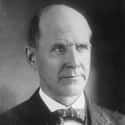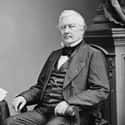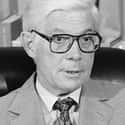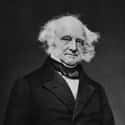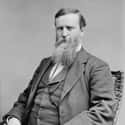-
(#8) Theodore Roosevelt
- Dec. at 61 (1858-1919)
Election Year: 1912
Party Affiliation: Progressive Party
Percentage of Vote Won: 27.39%
Teddy Roosevelt could be considered one of the best third-party presidential candidates, as he had already served successfully as the 26th president of the United States. Roosevelt refused to serve a third term in office and anointed William Howard Taft as his successor. But by 1912, Taft and Roosevelt had parted ways ideologically, with Taft supporting business interests and Roosevelt backing policies that favored labor unions. That led Roosevelt to break his promise and stand for election again.
Roosevelt failed to defeat Taft in the primaries, and walked away from the party in disgust. He formed the Progressive Party (more popularly known as the Bull Moose Party) and became its first presidential nominee. Owing to his popularity within the Republican Party, Roosevelt siphoned numerous votes from Taft, dooming his reelection bid. Roosevelt finished second in 1912, losing in an electoral landslide to Democrat Woodrow Wilson by a vote of 435-88.
-
(#9) Eugene V. Debs
- Dec. at 71 (1855-1926)
Election Year: 1912
Party Affiliation: Socialist Party
Percentage of Vote Won: 5.99%
Eugene Debs was, in a sense, the Bernie Sanders of his time. Debs was the standard-bearer for socialism in America for decades, running five long-shot presidential campaigns via the Socialist Party (including one run undertaken from prison after being incarcerated for speaking out against WWI).
Debs had his best showing amidst the chaos of 1912, though he carried no states. His support for labor movements and workers' rights, combined with his passionate oratory, made him the most popular socialist figure in American politics. Thanks to his efforts, the Socialist Party survived until 1972, as the polarization of US politics made niche parties less viable and socialism temporarily fell out of favor.
-
(#4) Millard Fillmore
- Dec. at 74 (1800-1874)
Election Year: 1856
Party Affiliation: American Party
Percentage of Vote Won: 21.5%
Another former president seeking to return to power, Fillmore stood for the American Party, better known as the "Know Nothings," named after their cagey responses to non-party members asking for details of their organization. The previously dominant Whig Party had collapsed, the fight over slavery was reaching a fever pitch, and sitting Democratic president Franklin Pierce was so unpopular that he failed to win the nomination of his own party. This instability was an ideal breeding ground for a fringe third party to grab the national spotlight.
Echoes of the Know Nothings' party platform can be seen in today's politics: distrust of immigrants, the deportation of "undesirables," state-mandated religious education, strong government regulation of private industry, and the expansion of rights for minorities and women. The Know Nothings, while ostensibly anti-slavery, focused most of their attention on the hatred of immigrants and Catholics, making them one of the first isolationist movements in American politics. Fillmore won a significant percentage of the popular vote, but only captured one state, Maryland, netting him a scant eight electors. This would be the final presidential election to feature a Know Nothing candidate, as the Civil War made questions of immigration far less pressing.
-
(#13) John B. Anderson
- 97
Election Year: 1980
Party Affiliation: N/A
Percentage of Vote Won: 6%
The 1980 election proved to be a decisive victory for Ronald Reagan and the Republican Party, but it was not without its hiccups. President Jimmy Carter had proven to be a highly unpopular chief executive thanks to the Iran hostage crisis, a sputtering economy, and high gas prices, and had to weather a primary challenge from Senator Ted Kennedy. On the Republican side, former California Governor Ronald Reagan competed against a wide variety of opponents, which included George H.W. Bush, Bob Dole, and Illinois congressman John Anderson.
Anderson fell to Reagan, but chose to mount a quixotic independent run in the general election. Anderson hoped to be a more moderate alternative to Reagan's conservative message of supply-side economics, increased military spending, and cutbacks on social programs. Anderson took no states in the face of Reagan's historic landslide victory.
-
(#3) Martin Van Buren
- Dec. at 80 (1782-1862)
Election Year: 1848
Party Affiliation: Free Soil Party
Percentage of Vote Won: 10%
The case of Martin Van Buren and the Free Soil Party is a unique one in American history, primarily because Van Buren had already served a single, four-year term as president from 1837-1841. The seasoned New York politician swept into office thanks to an endorsement from highly popular outgoing president Andrew Jackson, under whom he had served as vice president.
Four years later, Van Buren was defeated in his reelection bid by William Henry Harrison, but he didn't fade from the national stage as later one-term presidents like Jimmy Carter or George H.W. Bush would in the 20th century. Van Buren became a vocal abolitionist, advocating for the human rights of enslaved Americans. Free Soilers believed it was impossible for the federal government to free the slaves of the South, but that they could prevent slavery from spreading to new territories in the West.
Van Buren stood as their first presidential candidate, but found far less success in his third attempt at the presidency. The Free Soil ticket finished last out of three candidates, with Zachary Taylor of the Whig Party securing the necessary electoral votes to win the Oval Office. The Free Soil Party folded in 1854, and much of its platform was co-opted by the fledgling Republican Party.
-
(#7) James B. Weaver
- Dec. at 79 (1833-1912)
Election Year: 1892
Party Affiliation: Populist Party
Percentage of Vote Won: 8.5%
The Populist Party, also known as the People's Party, was another expression of America's long history of anti-authority, anti-elitist feelings. The Populists were made up of a coalition of farmers fighting against what they believed to be restrictive government initiatives. They pushed for tariff reform, a graduated income tax, the federal regulation of railroads, and other policies designed to stop the spread of corporate influence through American economic policy.
Former Iowa congressman James B. Weaver was their nominee in 1892, collecting 22 electoral votes - the first third-party candidate to win electors since the Civil War. The Populists dissolved in 1909, but saw one major part of their platform enacted: the direct popular election of senators instead of election by a vote of state legislatures. This one reform changed American history forever.
New Random Displays Display All By Ranking
About This Tool
In presidential elections, although third-party candidates always end in failure, the third-party candidates running for election does not make any sense if only success and failure are considered. From the perspective of political development, the participation of third-party presidential candidates is still very meaningful. First, although Republicans and Democrats monopolize most of the public offices of the US Federal Congress and state governments, sometimes third-party candidates still have individual successful political figures in presidential elections or governor elections.
The random tool lists 14 of the most viable third-party presidential candidates in history who were also influential in the United States, their contributions can not be ignored.
Our data comes from Ranker, If you want to participate in the ranking of items displayed on this page, please click here.












